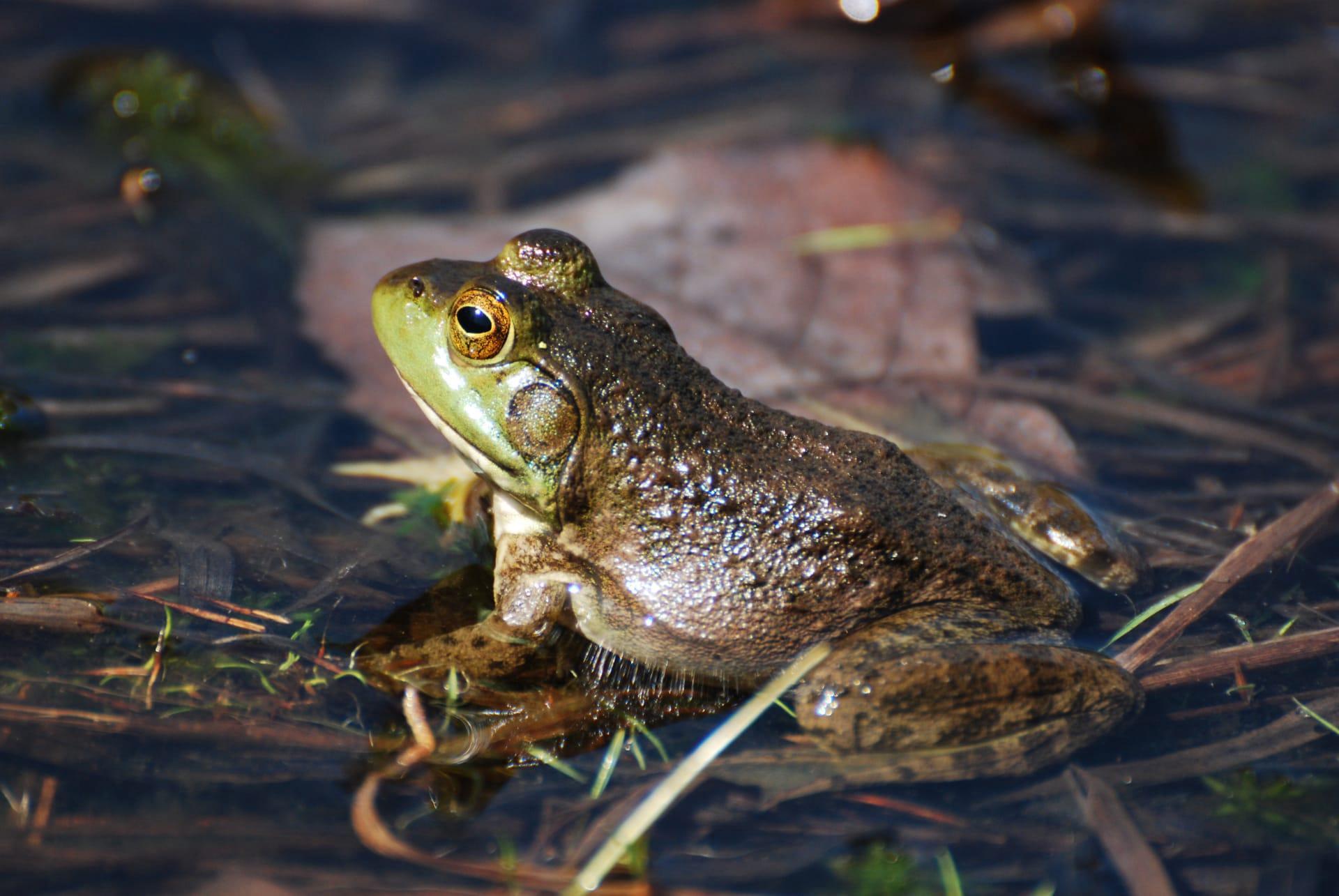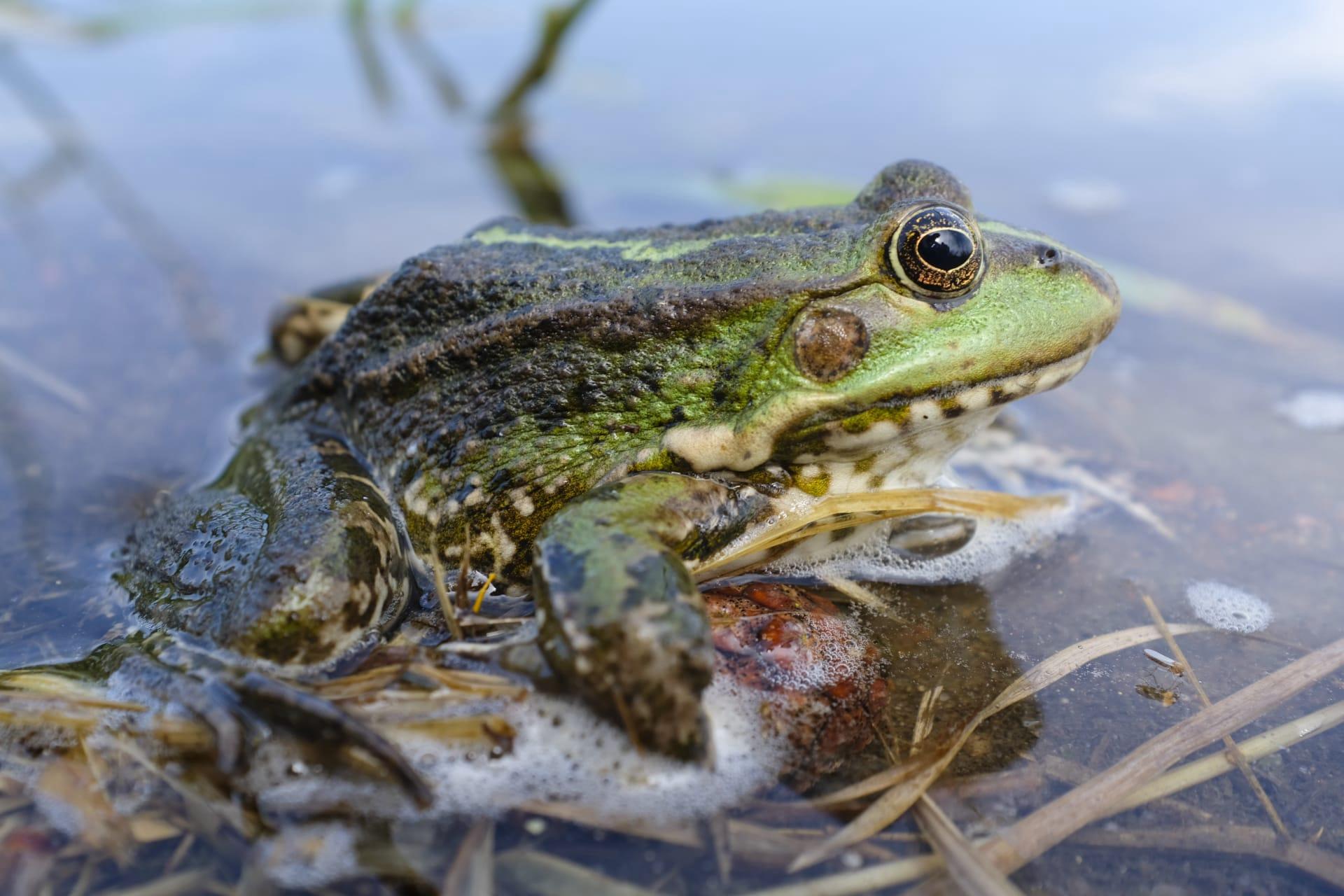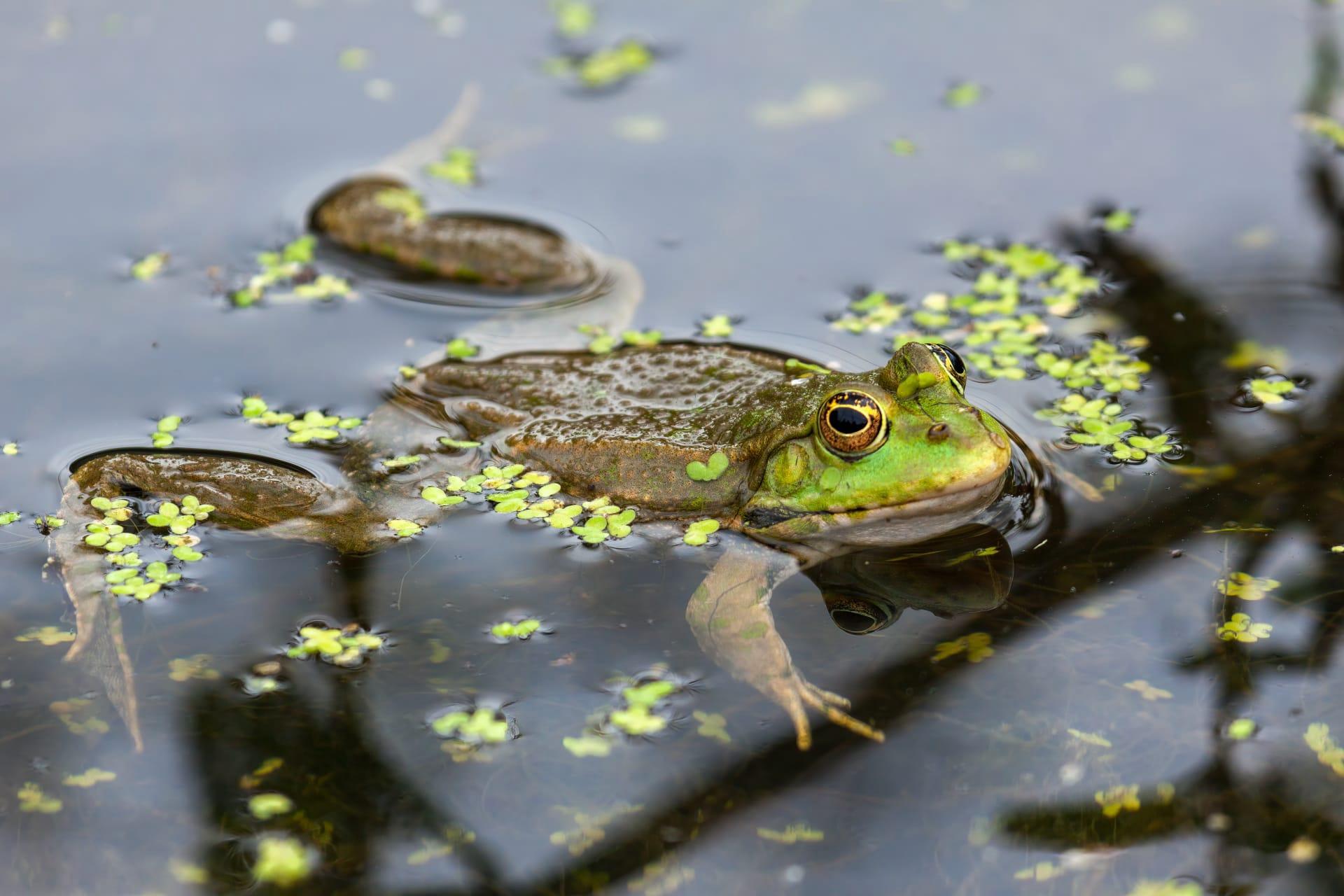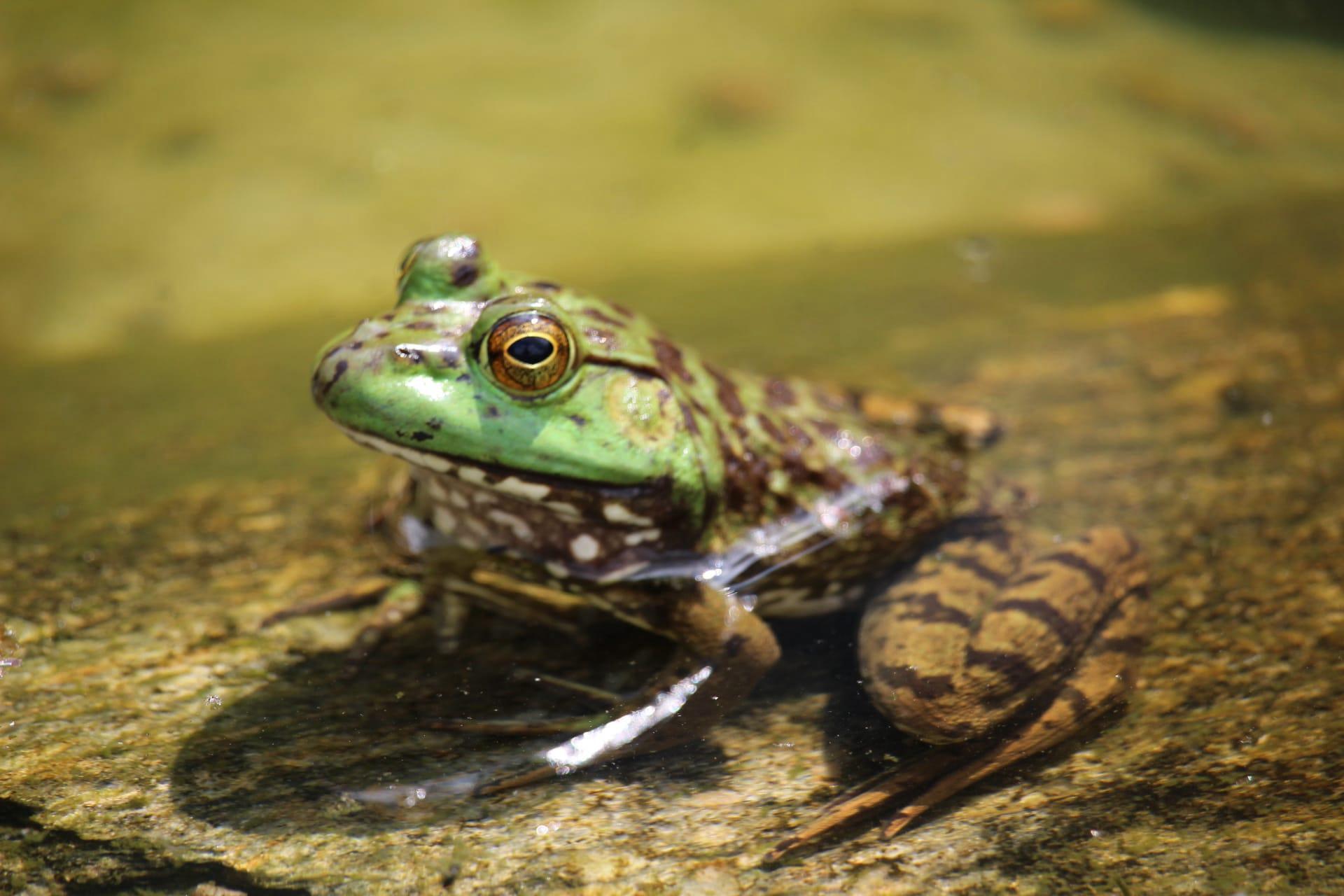1
The American Bullfrog (Lithobates catesbeianus) is a vocal virtuoso among frogs. Its bellowing calls, which resemble a bull's roar, can be heard over a quarter mile away. These powerful calls serve a dual purpose: attracting mates and establishing territorial dominance. Each male has a unique call, a deep and resonant "jug-o-rum" sound, that can last up to four seconds. During mating season, their chorus is a nocturnal symphony that fills the air near water bodies.
Bullfrogs are remarkable jumpers. Despite their hefty size, with some reaching up to 8 inches in length and weighing over a pound, they can leap distances over 6 feet in a single bound. This jumping ability is not just for show; it's a critical survival tactic, allowing them to quickly escape predators and catch prey. Their powerful hind legs, almost as long as their entire body, are the secret to these impressive leaps.

2
When it comes to diet, the American Bullfrog is not a picky eater. These amphibians are known for their voracious appetite and will consume almost anything they can overpower and swallow. This includes insects, small mammals like mice, other frogs, and even birds. Their hunting strategy is ambush-based; they sit still, camouflaged among vegetation, and then swiftly use their long, sticky tongue to capture unsuspecting prey.
Bullfrogs have a surprisingly long lifespan for amphibians. In the wild, they can live up to 7-9 years, but in captivity, their lifespan can extend to 16 years. This longevity is quite exceptional, considering most frog species have much shorter lifespans. The key to their extended life is their adaptable nature and ability to thrive in a variety of environments, from ponds and lakes to slow-moving rivers.

3
Reproduction in American Bullfrogs is a competitive affair. During the breeding season, males gather in large numbers around water bodies, each defending a small territory. The size and depth of a male's call not only attracts females but also intimidates rival males. Females, drawn to the most resonant calls, lay up to 20,000 eggs in a gelatinous mass on the water's surface. These massive clusters of eggs are a survival strategy, ensuring that at least some will survive predation and environmental challenges.
American Bullfrogs are known for their remarkable growth rate. After hatching from eggs, they undergo a tadpole stage that can last up to two years - much longer than most other frog species. During this period, they grow continuously, eventually undergoing a dramatic metamorphosis into adult frogs. This extended tadpole stage allows them to grow larger and stronger, giving them an advantage in survival and competition.

4
The skin of the American Bullfrog is more than just a protective layer; it's a complex respiratory system. Bullfrogs, like many amphibians, can breathe through their skin, a process known as cutaneous respiration. This ability allows them to absorb oxygen directly from water, an essential adaptation for their aquatic lifestyle. Their skin must remain moist to facilitate this gas exchange, which is why they are often found near or in water.
Bullfrogs have an impact on local ecosystems. As invasive species in many parts of the world, including the western United States, Europe, and Asia, they significantly disrupt local wildlife. Their large size and voracious appetite allow them to outcompete and prey on native species, leading to declines in local frog populations and other small wildlife. Their presence in non-native habitats is a challenge for conservationists working to preserve biodiversity.

5
Their vocal sacs are not just for show. Male American Bullfrogs have large, expandable vocal sacs that amplify their calls. When inflated, these sacs can be as big as the frog's head, dramatically boosting the volume and reach of their mating calls. This adaptation is crucial for communication over long distances in their aquatic habitats, where sound travels efficiently.
Temperature plays a crucial role in the development of American Bullfrog embryos. The speed of their development from egg to tadpole is highly temperature-dependent. In warmer waters, the eggs hatch faster, sometimes in just a few days, while in cooler temperatures, the process can take a week or more. This sensitivity to temperature has implications for their distribution and breeding success in varying climates, making them a species of interest in studies of climate change impacts on amphibians.